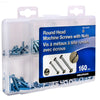In the realm of home heating systems, furnace filters have undergone significant transformation over the years. With technological advancements and increased awareness of air quality, the humble furnace filter has evolved from a basic dust-catcher to a sophisticated air purification component.
For more information on furnace filters and other heating system components, visit XPartSupply.
The Early Days of Furnace Filters
Initially, furnace filters served one primary function: to protect the HVAC system from dust and debris. These early models were simple and often made from fiberglass, capturing large particles while allowing air to flow through the system unimpeded. While they offered basic protection, they provided little in the way of enhancing air quality within the home.
Advancements in Filtration Technology
As scientific understanding of indoor air pollution grew, so did the demand for more efficient furnace filters. This led to the development of pleated filters, which increased the surface area available for particle capture without reducing airflow. These were a marked improvement over fiberglass filters and offered better protection against common allergens such as dust mites, pollen, and pet dander.
High-Efficiency Furnace Filters
The next leap in filtration technology came with the introduction of High-Efficiency Particulate Air (HEPA) filters. Designed originally for use in hospitals and research labs, HEPA filters have found their way into residential furnaces and have set a new standard for air quality. Capable of capturing 99.97% of particles as small as 0.3 microns, HEPA filters are exceptional at removing not only allergens but also fine dust, mold spores, and even some bacteria.
Innovations in filter design have also led to the creation of electrostatic filters. These use static electricity to attract and capture smaller, charged particles, enhancing filtration efficiency without obstructing airflow. Such technologies have made furnace filters not just a protective mechanism for HVAC systems but also a crucial component in maintaining healthy indoor air quality.
The Road Ahead
As concerns about air pollution and health continue to rise, so too will the demand for high-performance furnace filters. Manufacturers are investing in research to create filters that not only block particles but also neutralize pollutants such as volatile organic compounds (VOCs) and other harmful gases. The next generation of furnace filters may very well incorporate smart technologies, offering real-time data on air quality and filter effectiveness.
In conclusion, furnace filters have come a long way from their original design, evolving into complex but essential devices for both system protection and air quality improvement. As the science of filtration advances, homeowners can expect even greater performance and efficiency from their furnace filters.
Explore more about the latest in furnace filter technology and find the right fit for your home heating system by visiting XPartSupply.







